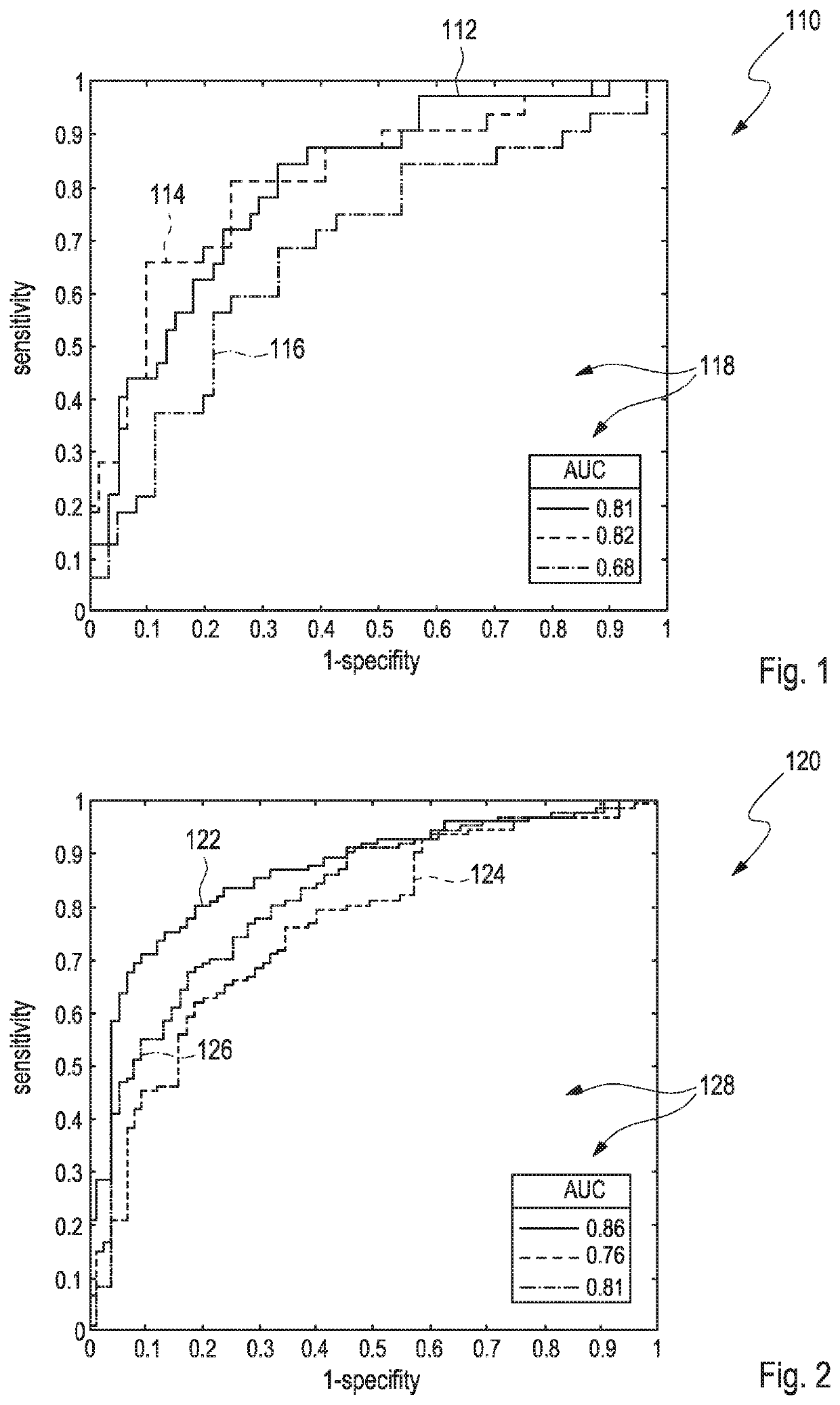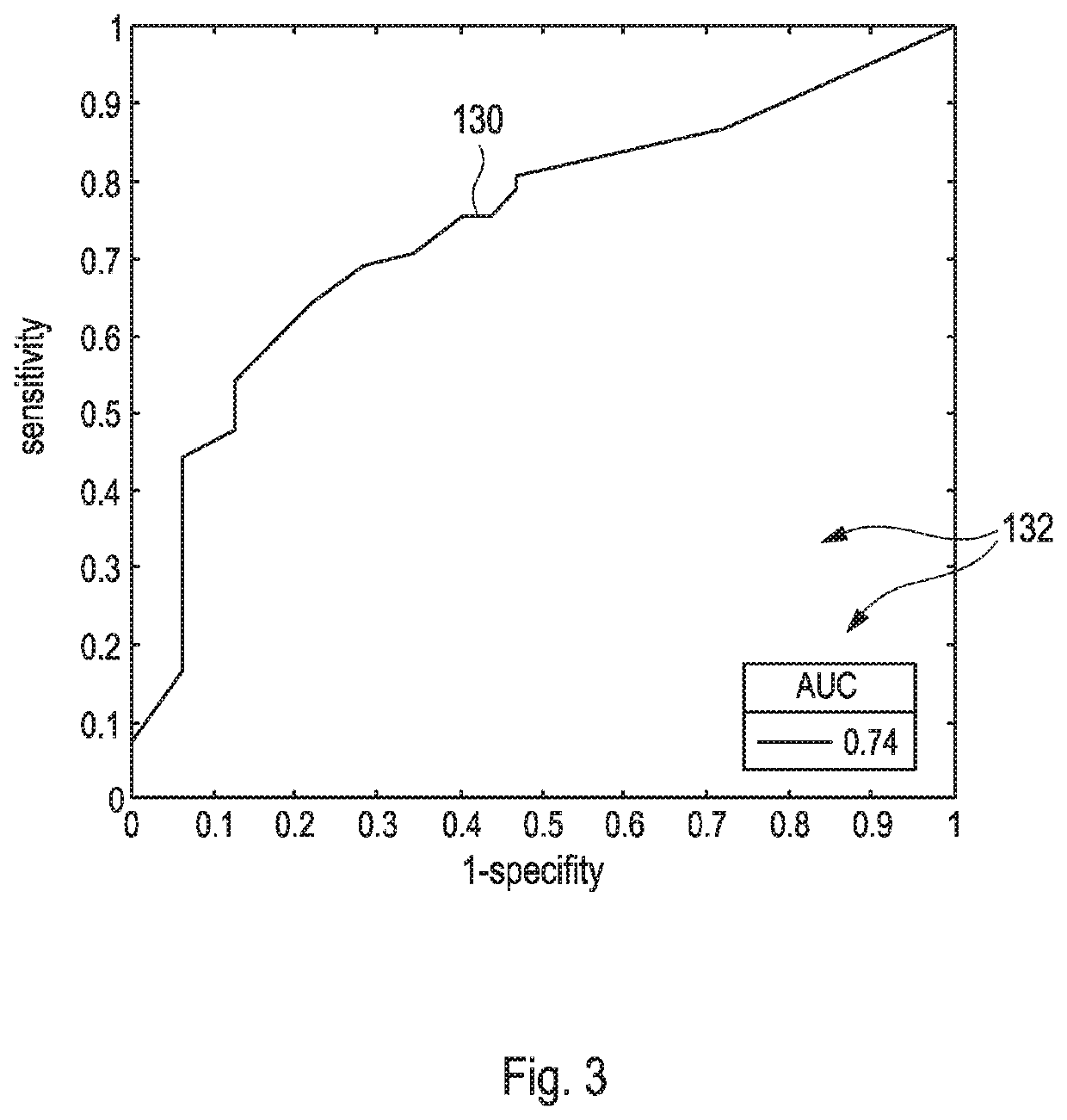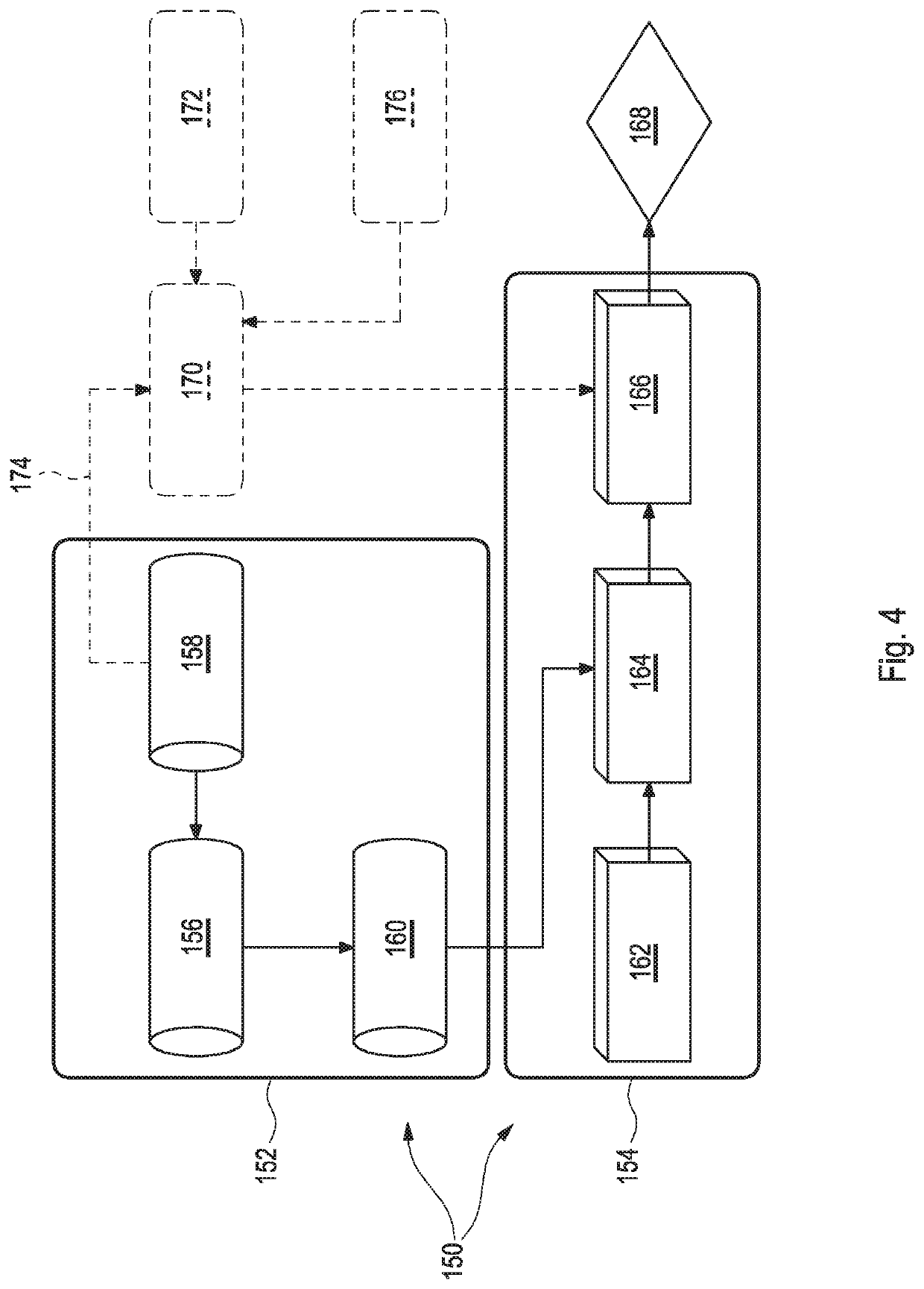Method and device for non-invasively classifying a tumorous modification of a tissue
a tumorous modification and non-invasive technology, applied in the field of non-invasive imaging modalities for oncologic imaging, can solve the problems of only properly characterized tissue, nephrogenic systemic fibrosis, and nephrogenic fibrosis, and achieve the effects of shortening the examination time, increasing the cost of the imaging method, and reducing the risk of allergic reactions
- Summary
- Abstract
- Description
- Claims
- Application Information
AI Technical Summary
Benefits of technology
Problems solved by technology
Method used
Image
Examples
Embodiment Construction
[0071]For comparison purposes, FIGS. 1 to 3 demonstrate that currently available solitary quantitative parameters based on diffusion weighted imaging (DWI) sequences for differentiating between benign and malignant tissue in magnetic resonance imaging (MRI) only exhibit of a rather limited diagnostic value.
[0072]In particular, FIG. 1 illustrates a scheme 110 which comprises three different receiver operating curves (ROC) 112, 114, 116 for three different types of solitary quantification schemes, wherein each of the solitary quantification schemes was applied for determining microstructural tissue correlates in benign and malignant breast lesions as extracted from diffusion weighted imaging (DWI). Hereby, each of the curves 112, 114, 116 renders values of a sensitivity as depicted versus values of 1-specify, wherein each of the curves 112, 114, 116 represents one of the following different solitary quantification schemes, wherein[0073]the curve 112 refers to ‘diffusional kurtosis ima...
PUM
 Login to View More
Login to View More Abstract
Description
Claims
Application Information
 Login to View More
Login to View More - R&D
- Intellectual Property
- Life Sciences
- Materials
- Tech Scout
- Unparalleled Data Quality
- Higher Quality Content
- 60% Fewer Hallucinations
Browse by: Latest US Patents, China's latest patents, Technical Efficacy Thesaurus, Application Domain, Technology Topic, Popular Technical Reports.
© 2025 PatSnap. All rights reserved.Legal|Privacy policy|Modern Slavery Act Transparency Statement|Sitemap|About US| Contact US: help@patsnap.com



